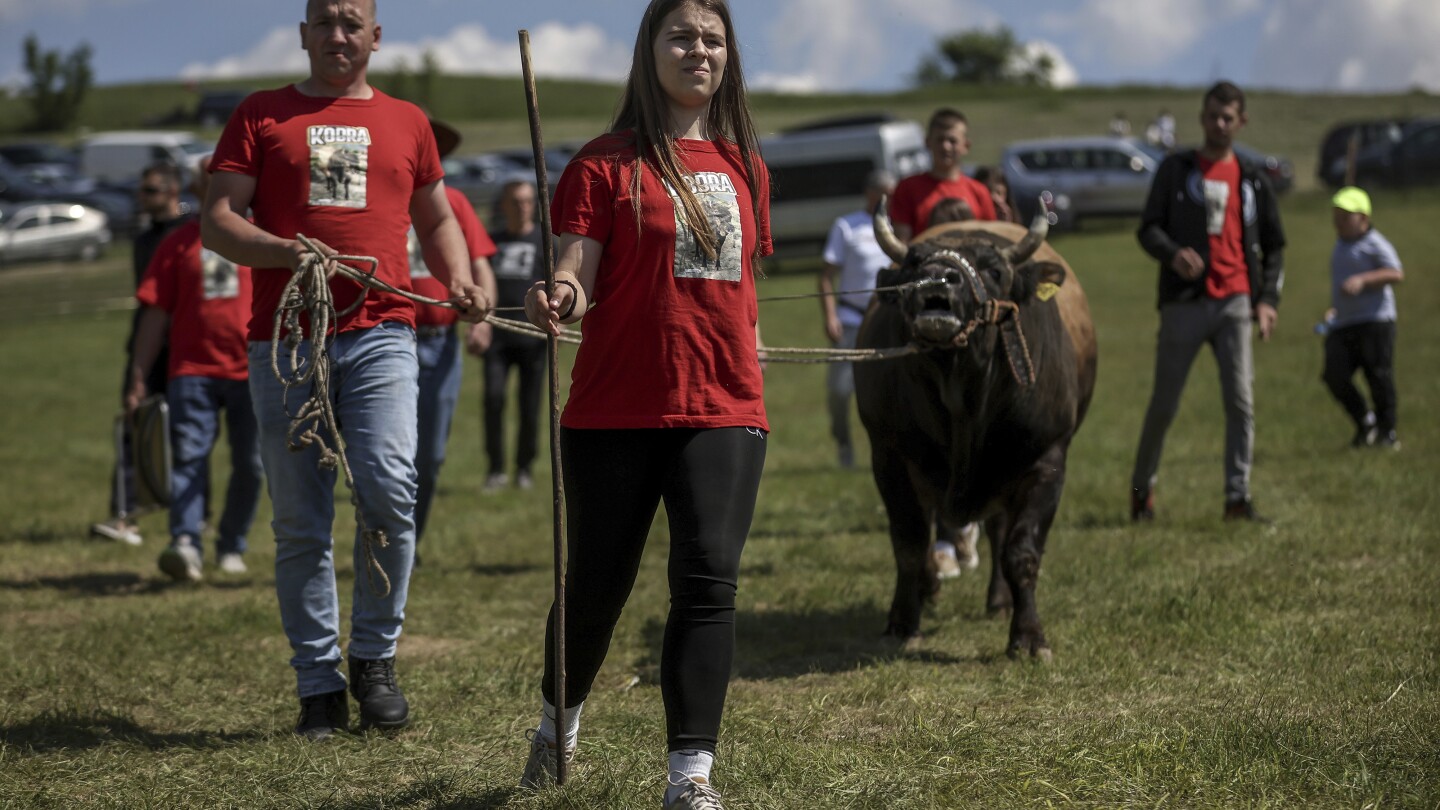Lifestyle
As Biden-era ‘junk fee’ rule takes effect, Ticketmaster says it will display fees more clearly

As a Biden administration ban on so-called “junk fees” took effect Monday, Ticketmaster said it would start displaying the full price of a ticket as soon as consumers begin shopping.
Ticketmaster, long a subject of complaints about hidden fees and other issues, was among those targeted by the new rule, which was announced in December by the Federal Trade Commission. The rule requires ticket sellers, hotels, vacation rental platforms and others to disclose processing fees, cleaning fees and other charges up front.
Ticketmaster said it agreed with the FTC’s action.
“Ticketmaster has long advocated for all-in pricing to become the nationwide standard so fans can easily compare prices across all ticketing sites,” Ticketmaster Chief Operating Officer Michael Wichser said in a statement.
Ticketmaster said it will also tell customers where they are in line when they log in to buy tickets to an event. It will also give real-time updates to customers whose wait times exceed 30 minutes, letting them know ticket price ranges, availability and whether new event dates have been added.
Ticketmaster, which is owned by Beverly Hills, California-based concert promoter Live Nation, is the world’s largest ticket seller, processing 500 million tickets each year in more than 30 countries. Around 70% of tickets for major concert venues in the U.S. are sold through Ticketmaster.
Ticketmaster said Monday’s changes would bring North America in line with the rest of the world, where full ticket prices typically are displayed as soon as customers start shopping.
SeatGeek, a platform for buying and selling original and resale tickets, said it also updated its features Monday to make “all-in pricing the default” setting.
“Fans deserve pricing that’s clear from the start,” said SeatGeek CEO Jack Groetzinger said. “We’re proud to roll this out across our platform and encouraged to see the industry move in this direction.”
Ticketmaster has been in the hot seat since 2022, when its site crashed during a presale event for Taylor Swift’s upcoming stadium tour. The company said its site was overwhelmed by both fans and attacks from bots, which were posing as consumers in order to scoop up tickets and sell them on secondary sites. Thousands of people lost tickets after waiting for hours in an online queue.
Last year, the U.S. Department of Justice sued Ticketmaster and Live Nation, accusing them of running an illegal monopoly that drives up U.S. ticket prices and asking a court to break them up. That case is ongoing.
President Donald Trump is also eyeing the industry. In March, he signed an executive order that he said would help curb ticket scalping and bring “commonsense” changes to the way live events are priced.
Under the order, the FTC must ensure “price transparency at all stages of the ticket-purchase process” and take enforcement to prevent unfair, deceptive, and anti-competitive conduct.
“Anyone who’s bought a concert ticket in the last decade, maybe 20 years — no matter what your politics are — knows that it’s a conundrum,” said Kid Rock, who joined Trump in the Oval Office as Trump signed the order.
Lifestyle
Allergic gardeners can choose plants that produce less floating pollen

For many, the return of the spring garden brings with it a sneezy, itchy, foggy-headed feeling that hits the moment a warm breeze stirs up invisible trouble. I’m fortunate not to suffer much, but my blue car turned a chartreuse shade of yellow last week, and a $32 car wash provided results that lasted only two hours. Sigh.
These seasonal allergies often go by the old-fashioned name hay fever, but it’s not the hay that causes misery for so many, it’s the pollen.
And not just any pollen, but the nearly weightless kind that floats up our noses and engages our immune systems. Trees, weeds, grasses and even some of our favorite flowers are culprits.
But pollen isn’t all bad. It’s essential to the reproduction of plants, the survival of insects and the entire food web. We humans could not survive without it, so we absolutely shouldn’t avoid high-pollen plants as a general rule. However, if you’re an allergy sufferer who has had to forgo planting a garden due to health reasons, plants that release the least pollen may enable you to smell the flowers.
Plants that might bring sneezes
Allergy-inducing plants are those that rely on wind rather than bees or butterflies to spread their pollen. Ragweed, which strikes in late summer and early fall, gets the most notoriety, but its springtime counterparts can be at least as irritating.
Trees most likely to cause symptoms include birch (Betula), catawba (Catalba), cypress (Cupressus), elm (Ulmus), hickory/pecan (Carya), oak (Quercus), sycamore (Platanus) and walnut (Juglans), according to the Ogren Plant Allergy Scale (OPALS), created by horticulturist Thomas Ogren and published in his 2020 book, “The Allergy-Fighting Garden.”
This article is part of AP’s Be Well coverage, focusing on wellness, fitness, diet and mental health. Read more Be Well.
Palm trees, too — but only the males. In fact, female trees don’t produce pollen at all, so seek them out when possible.
Grasses can irritate eyes and sinuses, too. The scale ranks Bermuda (except sterile male varieties), Johnson, Kentucky, orchard, sweet vernal and timothy grasses among the highest for allergens.
Weeds like ragweed, curly dock, lamb’s quarters, pigweed, plantain, sheep sorrel and sagebrush are also big pollen producers, Ogren found.
Not all plants are irritating to allergy sufferers
On the other hand, plants with “double” flowers or heavier pollen that doesn’t travel far are less likely to release much pollen.
Among trees, apricot (Prunus armeniaca), fig (Ficus), fir (Abies), fruiting pear (Pyrus), fruiting plum (Prunus domestica, Prunus insititia), redbud (Cerus), serviceberry (Amelanchier laevis), female ash (Fraxinus), female box elder (Acer negundo), female cottonwood/poplar (Populus), female maple (Acer), female palm (Arecaceae) and female willow (Salix) are easier on the respiratory system.
St. Augustine and sterile male Bermuda are safer bets in the grass department.
As for flowers, you’ve got options: Begonia, female clematis, columbine, crocus, daffodil, delphinium, hibiscus, impatiens, iris, bird of paradise, pansy, petunia, phlox, poppy, snapdragon, tulip, verbena and zinnia are friends. Roses, too — especially tightly packed, dense-petaled varieties, which exude even less pollen than those with single or semi-double flowers (rose allergies are more often fragrance-related than due to pollen, according to Ogren).
And if you suffer from seasonal allergies, keeping windows closed and getting someone else to mow the lawn will also help to nip your symptoms in the bud.
___
Jessica Damiano writes weekly gardening columns for the AP and publishes the award-winning Weekly Dirt Newsletter. You can sign up here for weekly gardening tips and advice.
___
For more AP gardening stories, go to https://apnews.com/hub/gardening.
Lifestyle
A teenage bullfighting enthusiast celebrates victories in Bosnia

KAKANJ, Bosnia (AP) — Like most girls her age, Bosnian teenager Mirnesa Junuzovic splits her days into free time and time reserved for school and house chores. How she spends the former, however, makes her quite unique.
The 15-year-old Junuzovic takes daily, hourslong walks with her bull, Cobra, and trains the beast for traditional bullfights that have been organized in the country for more than two centuries.
“We walk for three or more hours every day, I talk to him and call him by different nicknames that I have for him,” Junuzovic said, adding: “I can always anticipate when he is going to rush or scrape at the ground.”
Junuzovic believes that she and Cobra share a special bond and insists that while they train and walk through the fields and forest around her rural home on the outskirts of Kakanj, the bull sometimes uses its horns to move tree branches and shrubs out of her way.
When somebody else approaches him, Junuzovic insisted, “his whole demeanor changes” and he starts snorting.
“But he never acts like that with me,” she rushed to say. “He knows that I take care of him. He is just like a human, except that he cannot talk.”
Bullfights in Bosnia are relatively mellow and bloodless affairs resembling a natural clash for dominance between male bulls in the wild. Almost every weekend during the summer months, rodeo-like corrals are set up in forest clearings or meadows around the country.
Thousands of people gather around these enclosures in village fair-like settings to watch bull-on-bull fights in which animals push each other and clash horns until one of them admits defeat by turning their tail and fleeing. The clash often lasts just a few minutes.
Before bulls enter the arena, inspectors check their horns and even cut off the tips if they are too sharp. They also check the animals’ anti-doping test results and make sure the bulls clash heads only if they want to.
Among the village folk in Bosnia, the love of bulls and bullfighting is installed in children at an early age. Attending the fights is often embraced as a family activity.
“This is a part of our tradition. We love it,” explained Muriz Spahic, who drove for more than 70 kilometers (around 45 miles) to watch bulls fighting last Sunday outside the village of Bijelo Polje in central Bosnia.
“My grandpa loves it, he is here with us today, I love it, my child loves it,” he said, “We go to the fights together.”
In between the fights, the spectators fire up grills, roast meat, drink and dance to blaring folk music.
Fighting bulls of Bosnia have traditionally been trained by men, but women started joining the fray several years ago. Still, women in this field are rare and Junuzovic, who started training bulls at the age of 12, remains the youngest of the trainers.
Some of her school friends look down at her hobby and insist that it is “stinky,” she said. But those who she really cares about are “very supportive. They call to congratulate me every time we win.”
Bulls fight in different weight classes and Cobra, who weighs 620 kilograms (more than 1,360 pounds), is among the “lightweights.”
Cobra’s winning streak, which began eight fights ago, continued in Bijelo Polje, where he scored his ninth victory of the 2025 bullfighting season.
The other bull “quit,” because he “was unprepared,” Junuzovic said.
Around half of the scheduled battles overall end with one of the animals leaving the ring without even trying.
“Still, we won and every victory counts,” she said with a big smile.
Lifestyle
Prabal Gurung reflects on resilience and runway success in new memoir

NEW YORK (AP) — Designer Prabal Gurung has always been a storyteller. First, it was through the colorful, Nepal-inspired designs that helped him find early success in the cutthroat fashion world. Now, he’s sharing his life story in words with his bold new memoir, “Walk Like A Girl.”
The book, out Tuesday from Penguin Random House, traces his South Asian roots — born in Singapore, he grew up in Nepal and spent time in India — and difficult childhood. He would eventually move to New York to study at the Parsons School of Design, interning for Donna Karan and later working for Cynthia Rowley and Bill Blass. He started his own label in 2009, and has dressed celebrities including Michelle Obama, Kate Middleton, Zoe Saldaña and Sarah Jessica Parker.
Gurung, 46, says processing his childhood experiences with an abusive father at home and bullies and predators at school in order to write and record the book was the hardest thing he’s ever done.
“I really hadn’t told too many people, not even my close friends. To relive that part and to write it down … it was harrowing, I won’t lie,” Gurung told The Associated Press.
“It really brought back so many memories and … it’s less of an anger. It’s more like the injustice of the situation. More than anything else, I just wanted to go back to that kid and like, give him a hug … and just be like, ‘You’re gonna be OK,’” Gurung said, choking back tears.
(Photo by Andy Kropa/Invision/AP)
From Nepal to New York
Despite being teased and struggling academically, Gurung always thought he was destined for a bigger life: “I don’t know, I just had it in me. I think it was survival also a lot of times.”
One bright light that kept him going was the unwavering love and support of his mother, Durga Rana. She’s the hero of the book, encouraging him to follow his passions and find joy wherever possible, even though his interest in fashion and experimentation with makeup and feminine clothing was highly unconventional in Nepal at the time.
Surviving a marriage with an unfaithful, abusive husband, she essentially raised three young children on her own. Rana developed several successful businesses and eventually got into politics, telling her kids to use their platforms to make an impact.
“She’s a blueprint of my strength. Watching her carry the weight of the world with such elegance, you know, was really inspiring,” Gurung said. “The way she built the world around us, unbowed, unapologetic, was, I would say, my first lesson in resilience.”
A deep love of women
The book’s title and cover are a purposeful nod to the designer’s love of women. “Walk Like a Girl” was something kids said to tease him at school.
“I just didn’t understand it as an insult in the beginning because I think ‘Great, I’m like my mother, my sister, all these women.’ ‘Wonder Woman’ was my favorite action hero, and ‘Charlie’s Angels,’” Gurung said.
He decided to reclaim the phrase and chose his strength pose for the cover in honor of Rosie the Riveter and other “iconic, feminist women.”
Cindi Leive, the former editor-in-chief of Glamour and Self magazines, championed Gurung early on because of his authenticity on and off the runway.
“It became clear to me that he was incredibly interested not just in fashion as fashion, but in the women who would wear the clothes,” Leive told the AP. “I also noticed that every time I would have a conversation with him, he would end up talking about his mom.”
Gurung couldn’t wait to get to the U.S.; he felt immediately at home in New York, a place he sees as the best culmination of people, cultures and creative freedom, he writes. But he was surprised and disappointed by the general lack of diversity on runways and at social events.
“My recollection is he was one of the first to use models who more closely resembled the diversity of people that you actually see in America … in size, race and everything else,” Leive said.
Diljit Dosanjh and Prabal Gurung attend the 2025 Met Gala. (Photo by Evan Agostini/Invision/AP)
Gurung’s runway casting was only part of his commitment to inclusion. Now a Met Gala mainstay, Gurung uses his platform to speak out about injustice and women’s rights issues, which, at the beginning of his career was not a popular stance, leaving him feeling “like a lone ranger.” He recalled the emails and messages he used to get saying, “Oh, stay in your lane, you’re a fashion designer … not a politician.”
“He was very open about his support for issues that mattered to women, long before it was a thing. Eventually, I think, every designer had some, you know, slogan T-shirt proclaiming their support of women’s causes. He did it before anybody, but it went way deeper than the T-shirt,” Leive said.
“I’ll never forget when Cindi Leive at a dinner said to me — right after George Floyd’s murder and all of that stuff that happened, the Black Lives Matter movement,” Gurung said. “She pulled me aside, she said, ‘How does it feel now … to see the world catching up to you? You’ve been at it for such a long time.’ I didn’t even think about it.”
Authenticity, on and off the runway
Part of Gurung’s story is being a proud immigrant, and his connection to his Nepali roots come through in his designs. Indian-born American designer Bibhu Mohapatra has been friends with Gurung since they were both starting out, bonding over their South Asian roots. He says Gurung is “naturally curious” and has always been a great storyteller.
“Whether he’s doing a jewelry collection, whether it’s a piece of clothing or a whole collection, it’s always sort of backed by receipts of his experiences that are his tools of telling a story … whether about craft, whether it’s about color, whether it’s about his heritage, or simply people in his life, the designer said. “You believe it because it comes from a very authentic place.”
Mohapatra also admires Gurung’s “naturally rebellious streak” and his courage to speak out for causes he values.
“He’s brave to be the first one or join the force with people who are starting a movement,” the designer said.
Mohapatra also suggests Gurung’s spiritual side and roots add to his work and his ability to empathize: “There is an aspect of slowing down, really attention to the core and looking back at the path and … there is a bit more spirituality woven into the daily lives of people of Nepal.”
Gurung says he hopes the book resonates with readers and encourages them to share their own stories.
“I want people to really understand that their existence, their story is worthy of being told, that they don’t have to hide themselves, they’re no longer invisible,” he said. “I know I’m on the cover, it’s my name and my story, but it really is a story about, for, and of so many people.”
-

 Middle East2 days ago
Middle East2 days agoIsrael kills 13, including children, amid dire humanitarian crisis in Gaza | Israel-Palestine conflict News
-

 Middle East2 days ago
Middle East2 days agoIsrael attacks Yemen’s Hodeidah, striking port areas | News
-

 Conflict Zones2 days ago
Conflict Zones2 days agoWhat can be learned from the latest conflict between India and Pakistan? | India-Pakistan Tensions
-

 Europe2 days ago
Europe2 days agoA bridge builder and quiet reformer. How Pope Leo will lead the Catholic Church
-

 Europe2 days ago
Europe2 days agoPoland blames Russian intelligence for arson attack on Warsaw shopping center last year
-

 Europe21 hours ago
Europe21 hours agoRussian spy ring leader jailed in UK for nearly 11 years
-

 Middle East2 days ago
Middle East2 days agoHamas says it will release US-Israeli captive Edan Alexander | Israel-Palestine conflict News
-

 Middle East23 hours ago
Middle East23 hours agoUK veterans allege war crimes by British forces in Afghanistan, Iraq | Crime News




